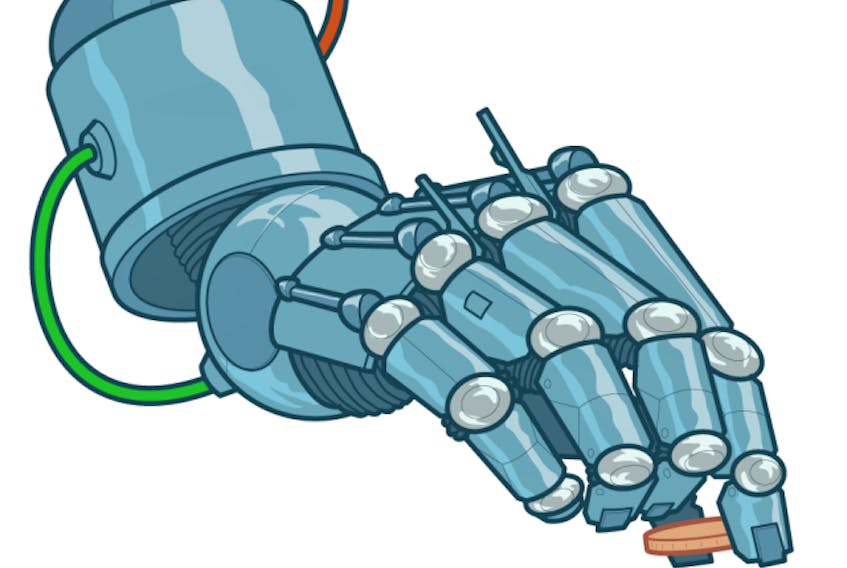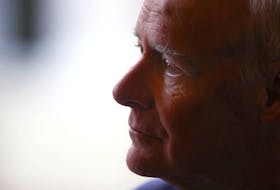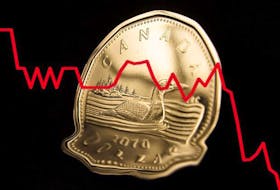It may be difficult to envision, but there is a potential future — be it 10, 20 or even 30 years down the line — where humans are able to plan a cozy vacation into space, blast by a series of satellites that now provide them with Internet access and have their most serious illnesses treated by allowing bioengineers to alter their DNA.
It’s one possible future that proactive investors, even those in typically reactive institutional settings, have begun to place large and risky bets on becoming a reality.
In April, the Ontario Teachers Pension Plan created a new department called the Teachers’ Innovation Platform that has a mandate to invest in disruptive tech and made its first big splash in June by backing Elon Musk’s SpaceX. The pension plan has particular interest in the company’s Starlink project, one that aims to fire more than 11,000 satellites into low orbit, interlink them all and have them act as a new provider of Internet connectivity.
For investing ... you want to look 15 to 20 years down the line and say: 'Is this still going to be impacting peoples' lives?
The Canada Pension Plan Investment Board has put a similar emphasis on investing in disruptive technology, announcing in late 2018 that it had made a private investment in Zoox, a California-based company that aims to operate a fleet of robo-taxis. Only months ago, the pension plan bought US$162 million worth of Skyworks Solutions Inc., a semiconductor firm creating chips that will allow the next wave of phones to work in 5G networks.
As for retail investors, they’ve likely never had as many options to hedge their portfolio toward the future. The 2019 IPO market offered them even more, bringing a basket of futuristic options to the market, including Beyond Meat Inc., a producer of plant-based meat, and Virgin Galactic Holdings Inc., the latest brainchild of Richard Branson, which is developing spacecraft that may allow for the development of a space tourism sector.
But the investors buying these stocks aren’t buying them with the hope that they’ll hit their peak in 2020.
“You have to recognize the world is changing,” said Hans Albrecht, the portfolio manager for Horizons ETFs Industry 4.0 fund. “There’s nothing wrong in investing in Pokemon cards if they’re hot now or whatever the latest trend may be, but that’s a trade. For investing … you want to look 15 to 20 years down the line and say: ‘Is this still going to be impacting peoples’ lives?'”
It won’t be long, Albrecht suspects, before his coffee maker is able to receive signals from his mug that tell it to begin brewing a new serving once he’s three-quarters of the way through his first cup in the morning.
If that scenario sounds too futuristic, it’s one that only scratches the surface, he said. When he’s running low on espresso packages, a chip in his pantry keeping track of stock may be able to automatically order more from Amazon, which at that point, may have implemented one-hour shipping, to ensure he’ll never run out.
Thousands of consumers already have access to smart home technology through Google Home or Amazon.com Inc.’s Alexa, which allow for the linking of devices such as thermostats, lights and televisions. It’s advancements in artificial intelligence and edge computing, which will effectively replace the cloud and allow for individual items in a home to process data, that will bring this technology into the future.
Figuring out how to play technology like edge computing which may very well become mainstream in a decade isn’t exactly simple.
Investors will have two options: they can bet on the end point user of the technology — in Albrecht’s coffee scenario, that would mean investing in the company that produces the coffee maker — or they can look to the firms that are developing the components that power it.
Albrecht leans towards the latter, suggesting that there would be far too much competition among the end point companies while there would only be a handful of leaders on the components side. A company like Analog Devices Inc., may play a central role in the implementation of that technology because it’s building everything from the sensors and their networks to processors.
Investors may be able to apply similar logic with 5G, according to CIBC World Markets tech strategist Todd Coupland.
Consumers will likely only begin to see the wide rollout of 5G, which would enable devices to operate at speeds that as much as 100 times faster than the current 4G tech, in 2020. That means that it might be a bit early to invest in device producers such as Apple Inc. or Samsung Electronics Co Ltd. for that exposure. Instead, Coupland suggested investors eye a company like Keysight Technologies Inc. which builds the equipment that carriers have been using to test out their services ahead of launch.
Goldman Sachs expects 50 million to 120 million 5G devices to be active in 2020 and if that should be the case, components manufacturers in Qualcomm Inc. and Marvell Technology Group Ltd. may warrant attention as would providers such as Nokia Ovj, which already has 50 deals in place to install its radio access equipment, AirScale, around the world. The equipment supports multiple frequencies and allows for a quick transition over to 5G.
That list doesn’t include the Canadian telcos — and for good reason.
“In Canada, Rogers and Bell, their attitude is: ‘See how it goes in the U.S. and we’ll be at least one year behind,'” Coupland said.
5G’s full potential likely won’t be reached for a decade, he said, and the futuristic possibilities it opens up will likely only be reached in the second half. When combined with the power of quantum computing, managing a fleet of self-driving cars and, who knows, removing traffic lights from the streets becomes a possibility, according to Christian Weedbrook, the CEO of Toronto-based quantum computing company Xanadu.
Weedbrook’s company has gained the attention of Georgian Partners, a private-sector venture capital firm that has invested hundreds of millions of dollars in upstart Canadian tech companies.
What makes quantum computing, a draw for Jason Brenier, Georgian’s vice-president of strategy, is its ability to “solve previously unsolveable problems.”
Weedbrook imagines a future where quantum computers control hundreds of autonomous vehicles for Uber Inc. or Lyft Inc. and provide each individual car with the fastest route to its destination, analyzing traffic, time a trip perfectly so that red lights can be mostly or completely avoided, and in the case of a pool scenario, figure out how to do that with multiple stops.
Investing in early stage technology comes with its challenges. Because Georgian focuses on private investments, there is no stock performance to point to and not much in the way of fundamentals to rely on.
Many of these tech companies that are seeking funding from the firm may show promise but won’t pan out in the future. Brenier knows this and says that’s one of the reasons why Georgian has its own scientists on staff.
Instead of making blind bets on the future, Georgian turns to its applied research and development team to identify new opportunities based on new academic research and to even conduct their own in order to determine whether a new idea is actually viable.
“That gives us some unique insight into how some of these things are taking off, how practical they are from an investment perspective and determining the timing of some of them,” Brenier said.
The Georgian team is futurist, but there’s still a limit on how far in advance they want to support a new wave of tech. “We don’t want to work on things that take 20 years to make a breakthrough,” Brenier said.
Where breakthroughs may be even more rare for futurist investors, but the potential returns all the sweeter is in health care. The possibilities here, especially when tech plays a part of the equation, appear to be boundless.
Albrecht sees the potential in robots being able to perform surgery on humans. The portfolio manager highlighted Intuitive Surgical Inc. and its da Vinci Surgical System as an example of how this is already occurring. Through a console that offers them a 3D view of the surface area they’ll be operating on, surgeons can use controllers to perform procedure with four robotic arms that offer a greater range of motion than human limbs.
Intuitive doesn’t just sell the machines, it sells the accessories like scalpels which are replaceable and need to be repeatedly ordered. So the more da Vinci units it sells, the more it opens itself up for further gains to its bottom line through accessory sales.
The next step, Albrecht said, is for this technology to allow surgeons to perform surgeries around the world remotely. After that’s accomplished, humans may be removed from the equation altogether with AI.
“You take the smartest doctors in the world and they might just have the slightest tremor in their hand and might not get it perfect, but a machine will come as close to that as possible,” he said.
Heathcare now makes up about a quarter of the CIBC Global Technology Fund, which is co-managed by Michel Marszal, who has a particular interest in gene therapy.
The technology may still be in development, but Marszal said scientists will soon be able to treat certain conditions, specifically those that plague humans as a result of mutated genes, by biologically engineering new sequences to replace them.
Take haemophilia, a condition that reduces the ability of a person’s blood to clot. Treating haemophilia A, which is caused due to a deficiency of a protein called factor VII, may soon be possible by removing cells from the patient, biologically engineering gene sequences with the protein in them and reinserting them.
Gilead Sciences Inc., a company that is in Marszal’s mutual fund, is working on gene therapy that might even be able to fight cancer. According to Marszal, the process involves removing immune cells from a human body and genetically modify them so that they become supercharged and are better positioned to fight cancer.
“The returns on investment in successful therapies are extremely high,” Marszal said. “That’s really the next decade or 25 years in medicine.”
Thinking that far ahead may be difficult for the average investor, who is often concerned with year-end returns. But it might be worth stopping as some futurists do, even during a quiet moment like a morning coffee, to consider just how different the world will look in a decade — and perhaps selfishly, how there’s profit to be made from it.
• Email: [email protected] | Twitter: VicF77
Copyright Postmedia Network Inc., 2019









